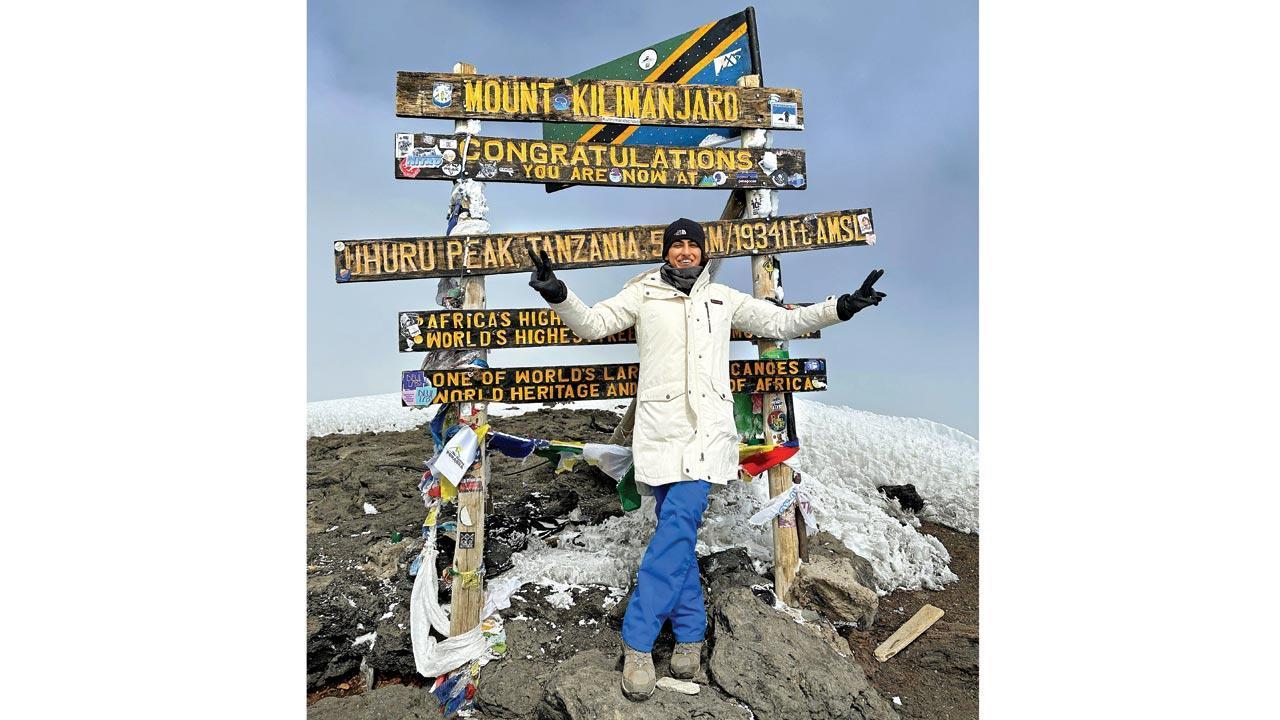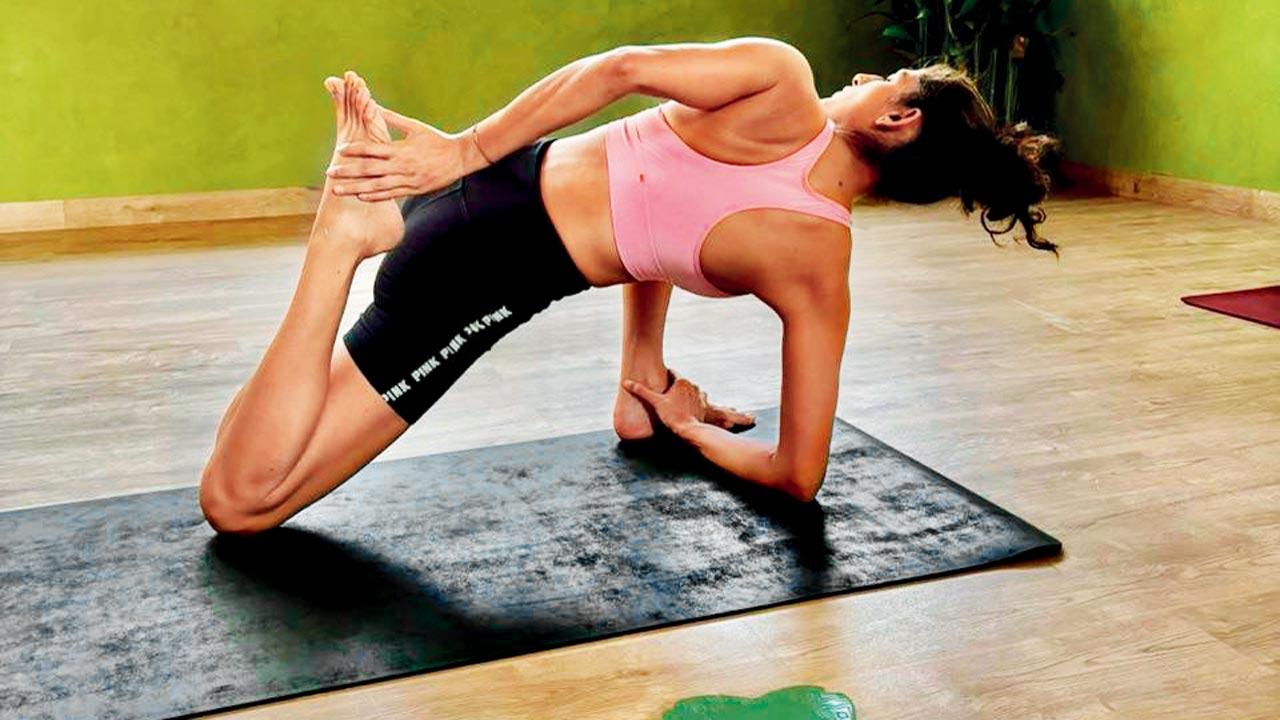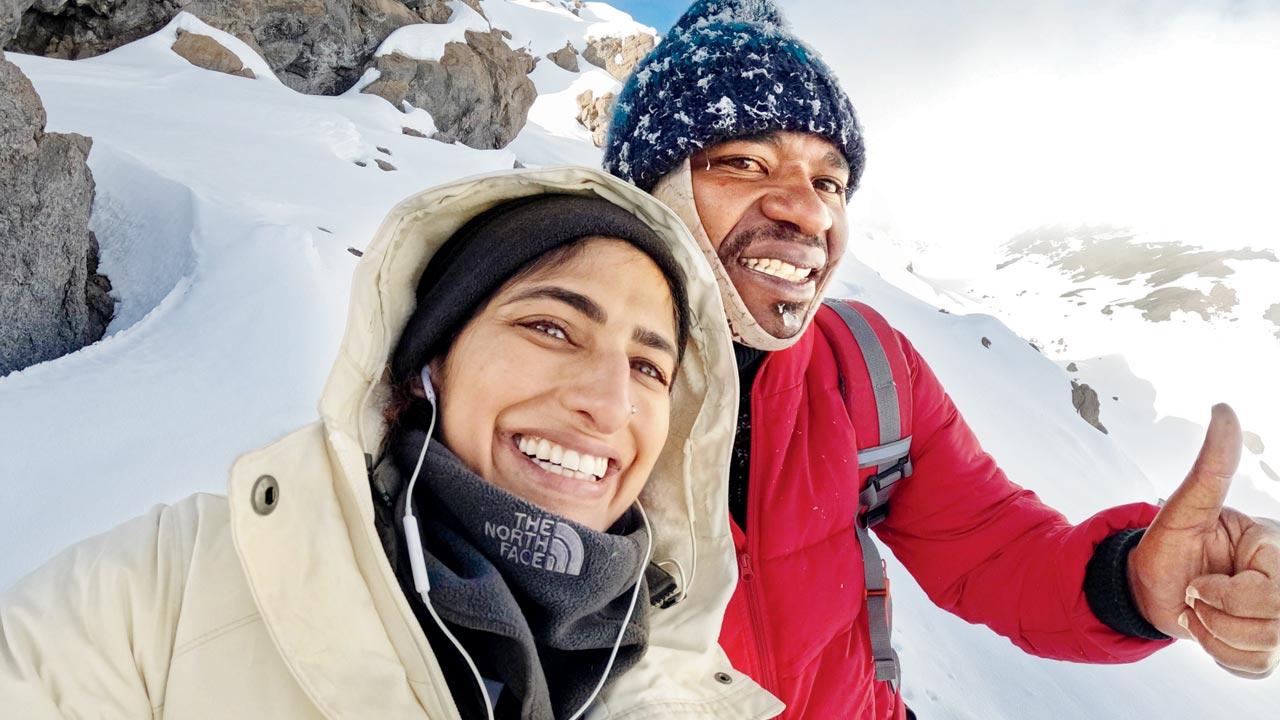Functional yoga, calisthenics, grit and no excuses—that’s what pushed Sacred Games actor Kubbra Sait up Mt Kilimanjaro

Actor Kubbra Sait scaled Mt Kilimanjaro on the final day after an eight-hour ascent, and then began a 40 degree, 15-hour descent with just two months of functional yoga and calisthenics
Seven years ago, actor Kubbra Sait summited in Leh, Ladakh, climbing to an altitude of 6,153 mts above sea level. “So, I thought I could easily do 5,900 mts of Mount Kilimanjaro [NE of Tanzania, near the Kenyan border],” says the effervescent Sait over a video call. “But it was a completely different ball game and I only decided two months ago.” The actor was on the trail for nine days, with a 15-hour descent after an eight-and-a-half hour climb the day before. And to think, just up to 10 days before she left for Africa, the actor was negotiating with herself and about to cancel the trip.
ADVERTISEMENT
“I told myself, if I cancel the tickets now, I could get a part refund, etc etc,” she says, grey-green eyes sparklingly as vivaciously as the diamond nose-pin perched on her equine features. “But I am grateful to myself that I did not quit. I was fighting stress with stress; using stress as an excuse to not do many things. But I wanted to do something special, important and that challenged me.”
Though she does “adventuring” every year, diving deep into the sea for one, many people were surprised to know she likes things to this extreme. Climbing a mountain requires going through different altitudes with eight to 12 kilos of supplies, four litres of water and clothes on your back, while wearing many layers of clothes—Sait wore about six layers through weather that changed from minus 10 degrees when she started at 12 am on February 13, the last day to the summit, and then it changed to plus 10 degrees as she climbed down with a 40-degree descent. She took the Northern Face route, which is more difficult, and was advised by other climbers to prepare by carrying a backpack with books or rocks up the stairs.

But that’s not what she did. “I just did functional yoga, which I have always done with deep bends and stretches, a month before the trip, I did calisthenic exercises with Rohan [Mazumdar of The Moving Place], working with only my body weight. You have to rely on your body to support you on the climb,” says the 40-something actor, “You have to ensure your knees are strong enough to take the weight as you move up from sea level. You are walking for hours, which you don’t usually do; and the air thins and you lose oxygen. It’s not like going to London and clocking 14,000 steps. Most importantly, you have to be mentally and spiritually prepared.”
And how does one do that?
“You have to submit to something bigger than yourself. It’s not a trip of the ego; you don’t do it to say, I did 50 squats or keep score. You have to bow to your body; to know when it can’t do something. So many people dropped out due to Altitude Mountain Sickness; but then 11-year-old and 14-year-old girls have scaled the summit. Climbing a mountain allows you to go super deep into yourself; this is why I think we should make it a part of our children’s lives. Just this vast thing that has been standing still for millennia, holding so many stories within it—a mountain teaches you so much without being preachy.”
And now she’s back in Mumbai, feet still swollen with water retention, blisters on her toes from the sharp descent, fingers still tingling from the change in weather, but heart full.

Summit, summarised
When should I book my climb?
First learn to be comfortable and confident in the mountains—do multi-day treks and stay in tents. Then, a minimum of three months is a good time to prepare for a climb.
How expensive is it?
I spent R5 lakh on the experience itself. Many travel companies offer competitive prices, but having travelled safely with Aquaterra Adventures over the last decade, I highly recommend them. They have a yearly calendar out for activities in and out of the country.
Do people die climbing Mt Kilimanjaro?
I completed the Stok Kangri climb the week after someone fell off the cliff. This is adventure sport. It is pertinent to be honest about your health, and follow your guides and their advice.
How can I improve my chances of making it to the summit?
Take the northern route—it’s longer and allows the body to acclimatise fairly well.
 Subscribe today by clicking the link and stay updated with the latest news!" Click here!
Subscribe today by clicking the link and stay updated with the latest news!" Click here!







